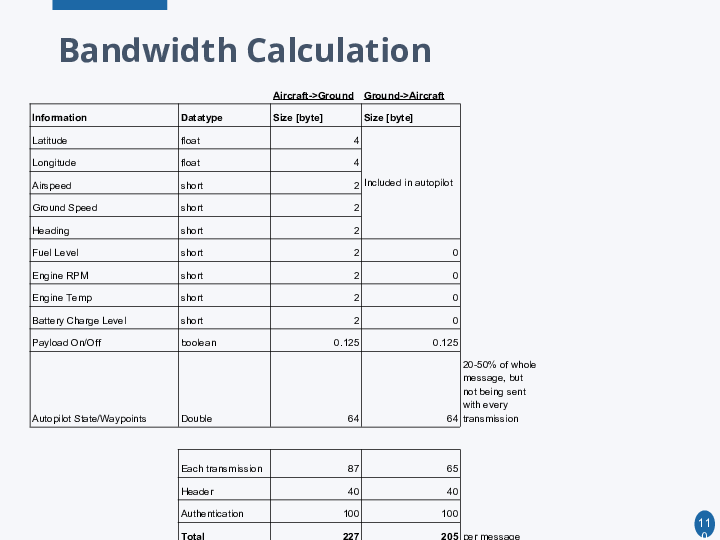Jungle Hawk Owl Research Project
The requirements for this vehicle were provided to the design team by the Lincoln Labs and the Air Force. They are best understood in the context of the vehicle’s intended mission. The objective is to fly a communications payload above an a disaster-stricken area for an extended period of time. An operational payload was designed and tested by Lincoln Labs to provide “bent pipe” communication over UHF(?). This type of mission would be required after a natural disaster, in order to provide basic communications in lieu of the destroyed infrastructure. As such, the aircraft’s endurance must be on the order of several days, until it is replaced by conventional communication. The payload’s coverage area is defined by a the altitude of the aircraft, due to line-of-sight communication restrictions. For the purposes of this type of mission, the coverage footprint must encompass large cities. Lastly, since natural disasters can occur anywhere on the globe, the aircraft must be able to fly in a wide range of weather, seasons, and atmospheric conditions.
The complete set of requirements are shown in Table 1. The requirements were split into two categories, named ‘threshold’ and ‘objective’, which are the minimum and stretch goals, respectively. These requirements define the type of aircraft needed to complete the mission, and its expected performance. Next, we will identify which requirements are the main drivers in the aircraft’s design,
The footprint of the communications payload is determined by the flight altitude. Considering the curvature of Earth, a 100km footprint requires a flight at 4.6km (15,100 ft) AGL, while a 300km footprint requires an aircraft capable of cruising at 14.9km (48,900 ft). This difference in threshold and objective requirements describe two very different aircraft: one which is capable of flight at general aviation-type altitudes, and another which can cruise above most jetliners. The major difference in aircraft design is in the engine required for these different altitudes. The lower altitude can be accomplished with a normally-aspirated engine, while the higher altitude requires a turbocharged or supercharged engine. While this is not necessarily prohibitive, the small size of engine required for this mission does not allow for turbocharging, as will be explained later. An even bigger issue with flying in the upper levels of the troposphere are the winds at higher altitudes.
Wind speeds appear implicitly in many of the requirements. Most long-endurance aircraft fly at low speeds (because...). An aircraft capable of station keeping above a disaster site would have to fly at least as fast as the winds above that area. As shown in figure 1, wind speeds increase with altitude below 11km (36,000 feet). Additionally, the 95th percentile winds at 15km are 42% higher than those at 5km. Thus, the aircraft designed for flight at 15km would have to fly at least 42% faster, hindering its endurance capabilities.
Wind speed also determines availability. Availability is the percentage of the time the airplane would be capable of flying. For most conventional, fixed-wing, gas powered aircraft, availability will only be reduced by winds that exceed the aircraft’s max speed, hazardous weather, and maintenance groundings. In order to achieve the required availability of 94%, the aircraft must be able to fly in the 95th percentile winds at its cruising altitude. For a cruising altitude of 5km, the 95th percentile wind in 2015 was 30.1 m/s. A map of the 95th percentile winds at 5km is shown in figure 2. The figure shows that the windiest locations are over the oceans, generally between the 30th and 60th parallels.
Endurance is the performance figure of merit for this aircraft. The ability to fly for 5 days is unique and crucial to this mission’s success. A 5 week mission, as described by the objective requirements, is considered unfeasible with conventional gas-powered aircraft due to the large amounts of fuel required, and hence the aircraft weight. A solar-powered aircraft could potentially achieve this extended endurance. However, a preliminary analysis showed that current technology…
It should be noted that time on station does not completely define endurance. As shown in table 1, the customers envision a situation where the aircraft is launched a great distance away from the loitering location. Thus, the aircraft must have sufficient speed and endurance to fly 100-600nm to its station and back, adding significant time to the aircraft’s actual endurance.





















